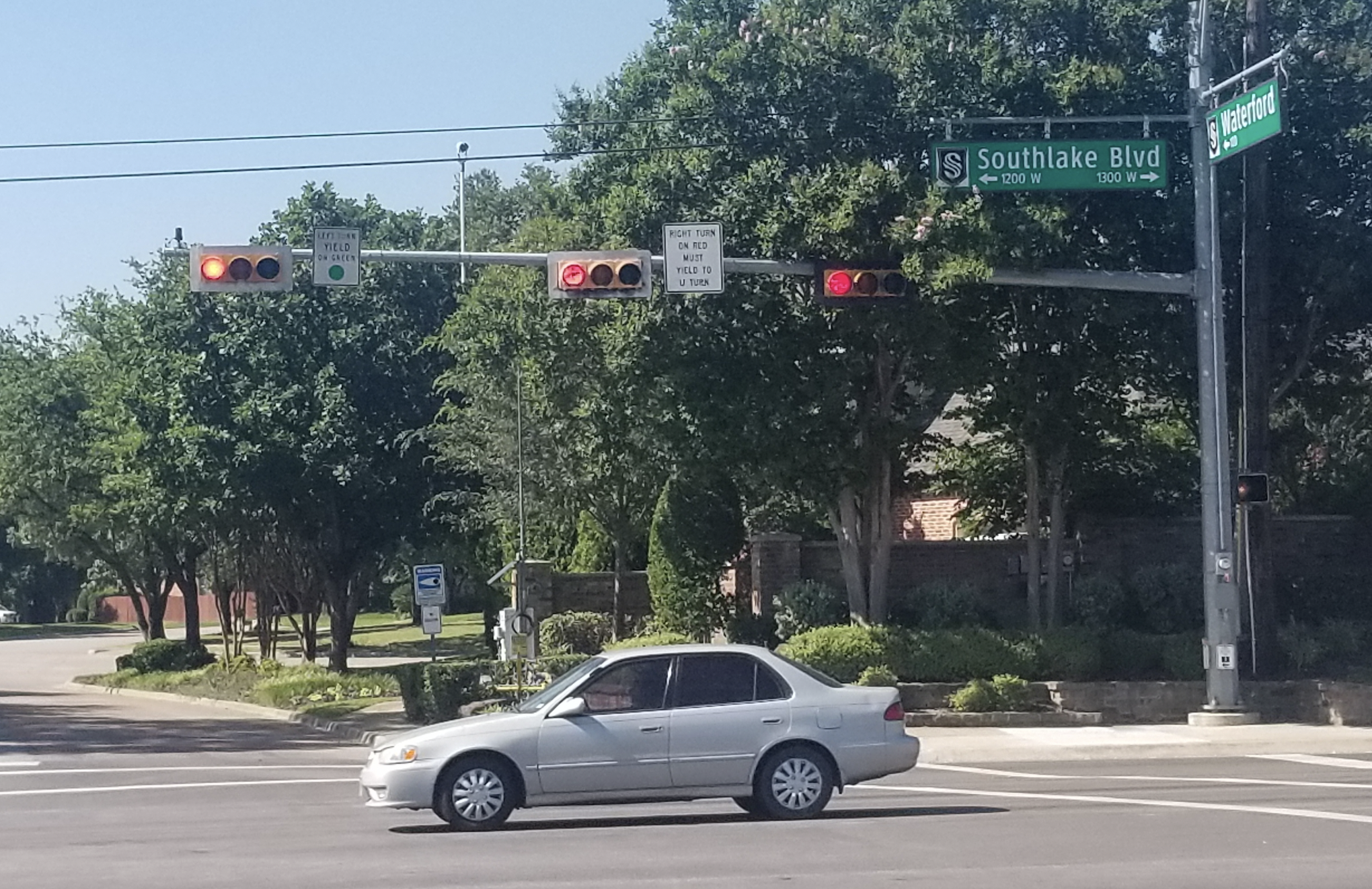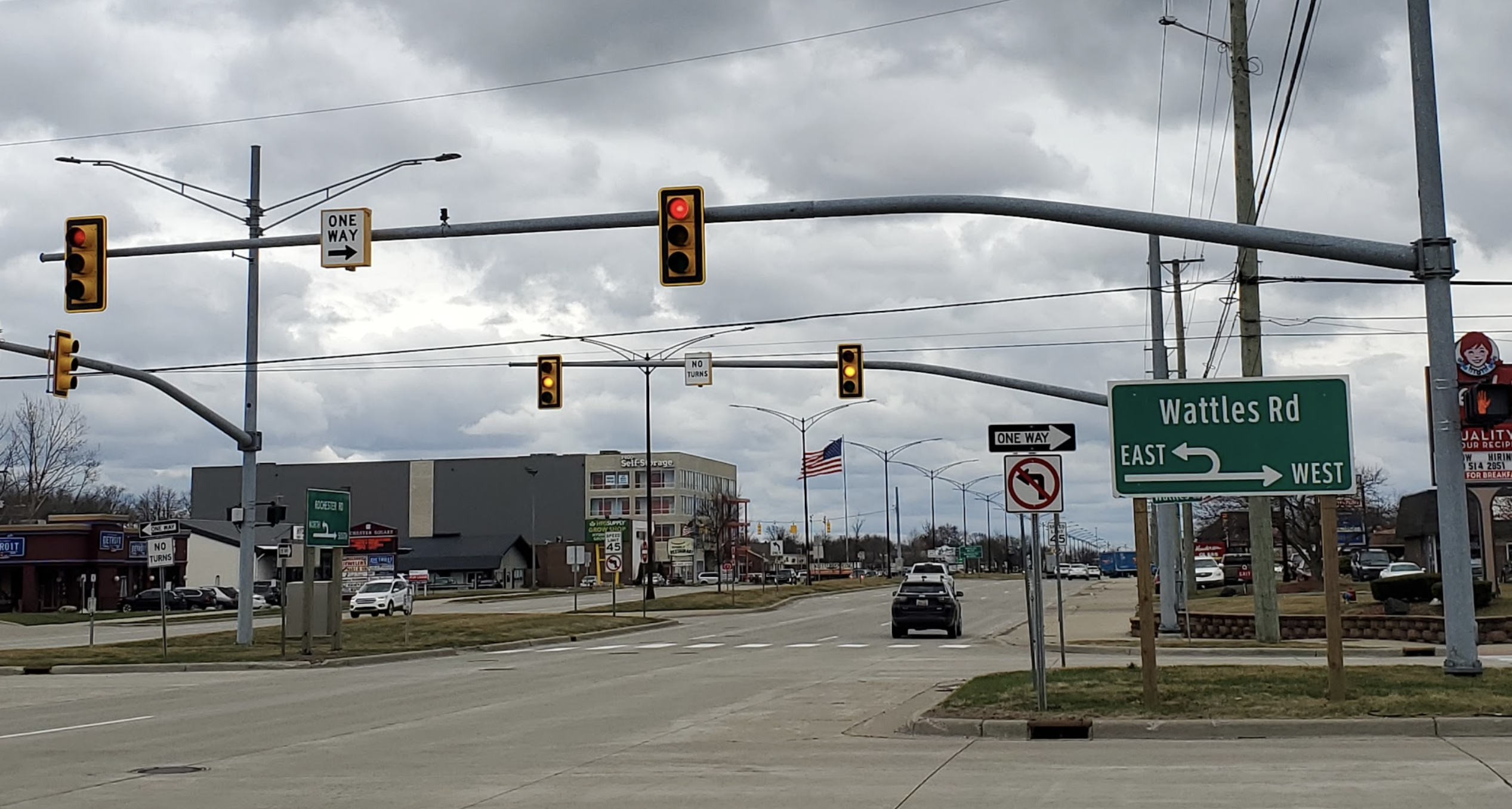I’d reached out to various safety organizations over the years, I’d called DOTs from multiple states, and for the most part, people only had guesses as to why some traffic signals look like this:
While others look like this:
But recently, with the launch of The Autopian, a number of brilliant engineers have reached out to me offering to act as sources for stories. One civil engineer named Joe Eberle introduced himself in his email as a Transportation Engineer. Upon reading his note, my heart pounded; I felt like maybe, just maybe, I could get the definitive answer to the question that has haunted me for far too long. I decided to shoot my shot:
Joe’s initial response was short: But then, presumably after some new struts and control arms had been installed into a truck, came the Big Kahuna; I was not prepared for the nerdiness that Mr. Eberle would impart upon me. Buckle up, folks. It’s about to get real.
Answers From A Transportation Enginerd
Wind, Some Notes About New ‘Backplates’ On Traffic Signals, Tethers
Vertical Clearance
Aesthetics Matter
I Reach Out To The Feds
Just as I sent my email to Eberle, I did a bit more digging to try once again to get to the bottom of the Horizontal versus Vertical traffic signal issue. I found myself reading a research paper about traffic lights, and saw at the top that it had been penned as part of a program called “Intersection Safety.” It turns out, the Federal Highway Administration (which falls under the Department of Transportation umbrella) has what’s called an “Office of Safety.” It’s an organization whose goal is — well, I’ll just let the Office of Safety break it down: That sounds fluffy, I realize that. But stay with me, here. This Office of Safety has a Washington, DC-based staff broken up into two main program “area units.” The organization breaks those units down:
“Office of Safety Technologies is responsible for highway designs and technologies that improve safety performance.” “The Office of Safety Programs is responsible for comprehensive Federal and State highway safety programs and activities that improve safety for all road users.”
Okay, things are still a little fluffy, but here’s the main point. That first bullet point about “highway designs and technologies that improve safety performance” has under its management a program called “Intersection Safety”:
That’s right, it’s an entire program and team whose job is to improve safety where roads cross one another. And you know what one tends to find at such locations? Stoplights!
Shortly after learning of this “intersection safety” group, I found the group’s webpage, which discusses why the team exists in the first place: Road intersections are among the most dangerous spaces in motoring, it turns out: Anyway, the webpage includes contact information for members of the Intersection Safety program. I sent an email, and heard back. What did I learn? Well, for one, I learned that Eberle is a genius, because he was right-on about MUTCD (which you can read here) being the relevant standard. From the feds at the DOT: I then asked what considerations would lead a transportation agency to go one way or the other. The DOT rep echoed Eberle’s notes about vertical clearance, wind, and aesthetics, but also added visibility as another factor:
Finally! We Have A Definitive Answer
I realize that I could have Googled this and perhaps obtained similar answers, but the fact is that whom the information comes from is as important as the information itself; I was never satisfied with what I found in my Google search results, but now I have the definitive answers. Directly from experts. I can sleep now knowing that Texas’s horizontal traffic signals are a choice, not a requirement, and that wind, visibility, aesthetics/historical precedence, and vertical clearance are the main factors that may have played a role in their presence over the ubiquitous vertical signals found in most other states.
Vertical clearance concerns Wind load issues Better sight distance at locations with vertical obstructions Aesthetic preference/uniformity
Generally, horizontal displays are used at specific locations where it is challenging to achieve the required vertical clearance above the roadway. In coastal areas or other locations with high wind speeds, horizontal displays can provide more stability and minimize the swaying of the signal displays. In some cases, horizontal signals provide a better line of sight for motorists such as when exiting a tunnel or a bridge. Some agencies may just prefer the visual appearance of one over the other and the consistency of having all of the signals in a jurisdiction with the same design. I can tell the red from green naturally, but it can take a second. My real problem is I can’t tell a flashing red from a flashing orange at night, and that the greenlights look white. This means at night I can get them confused with street lights at a distance. “Stop at the top, go below”






